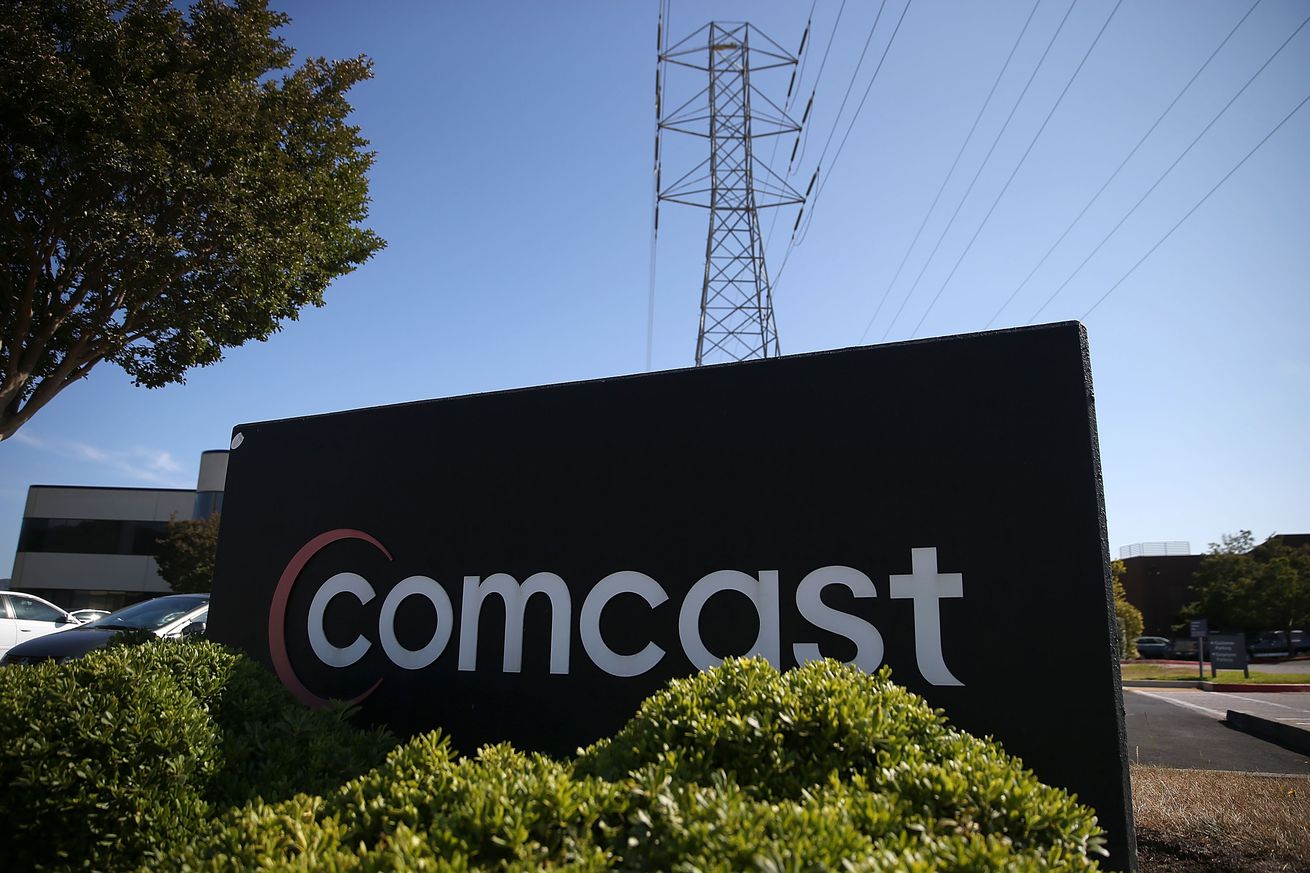As I talk with the many extraordinary guests on CXOTalk, an interview discussion forum that brings together the most innovative thinkers in the world, three key business aspects of artificial intelligence have emerged.
First, AI is a vague umbrella concept that ties together data and a set of technologies, such as pattern recognition and other techniques, that emulate human learning and intelligence. The term “artificial intelligence” is an imprecise marketing or presentation phrase used for the sake of convenience. Business buyers should dig deeper to understand the technologies that make the most sense for their organizations.
Second, few companies have deployed AI at scale. There are lots of prototypes and proofs of concept, but AI is still new and experimental for most organizations. For example, a recent survey by SAS states “AI adoption still in early stages.”
Third, be skeptical of vendor claims. Technology companies are still trying to figure out where AI can improve their products and the processes they automate. Many vendors have bought AI startups to gain expertise and fill gaps.
The bottom line for enterprise buyers: learn the tech, question your vendors, and plan for AI by developing data science talent in-house now. Talent scarcity is a big issue today.
—–
McKinsey Global Institute (MGI) is one of the foremost research organizations in the world on how AI will affect organizations and their workforce. McKinsey’s research combines quantitative analysis with extensive on-the-ground interviews of executives and business operators. As a result, the material they produce is insightful and useful. Two recent reports focus on the business value of AI and the impact of automation and demographics on work and the economy.
One of the partners leading McKinsey Global Institute’s work on the impact of AI and related technologies is Dr. Michael Chui, who is one of the most articulate people I know on these topics.
Chui’s comments are clear and rooted in solid research, making him a natural participant in the CXOTalk series of conversations with the most innovative leaders in the world. On episode 268 of CXOTalk, I spoke with Michael Chui about AI, business, ethics, policy, and economics.
Chui makes a couple of key points that I want to highlight. First, the success of an organization’s efforts to adopt AI is based strongly on its overall digital maturity. Companies with active programs of digital transformation will be more likely to make progress with AI initiatives. From my perspective, we can think of AI initiatives as extensions of digital transformation – rethinking culture, mindset, and business model — rather than isolated technology projects.
Second, start thinking now about how you will train your workforce as AI changes jobs and frees up labor to be re-deployed. Chui says that mass redeployment of labor will likely be one of the “grand challenges” we face.
The in-depth conversation lasts 45-minutes and is an important document describing how one of the world’s top AI business researchers views the issues today. You can watch the entire conversation and read a complete transcript of episode 268 at the CXOTalk site.
Here is an edited summary transcript pulled from the long discussion:
Tell us about McKinsey Global Institute?
McKinsey & Company is a global management consulting firm. The McKinsey Global Institute is part of McKinsey. It’s an investment by our group of global partners around the world to do research, quite frankly, on topics that matter. We’ve been around for over 25 years as part of McKinsey [and], for most of that time, have done work on productivity, country competitiveness, labor markets, [and] capital markets.
For the past few years, we’ve added another research leg, which is around the impact of long-term technology trends. We’ve looked at data and analytics. We’ve looked at open data. We’ve looked at Internet of Things. Increasingly, now we’re looking at artificial intelligence, robotics, and automation technologies and their potential impact on business, society, and jobs and employment more generally.
How do you define artificial intelligence?
You could go for hours debating it. We describe it as using machines to do cognitive work, to do the work that comes about primarily because of our brains. But, as it turns out, even from my graduate research studies, we know that not all our intelligence is just trapped in our brains. It’s also part of our bodies, et cetera. And so, we understand that, in many cases, artificial intelligence itself might enter the physical world and be things like robotics and autonomous vehicles, et cetera. But, it has to do with intelligence and then the machines that instantiate it.
What are some of the important conclusions of your research?
The potential for these technologies that we call artificial intelligence is huge. They affect potentially every sector, potentially every function. One reason for that is a lot of the potential applications of AI are extensions of the work that people had already started in data and analytics. And so, we’ve been looking at nearly 500 different use cases of artificial intelligence across every sector, across every function.
Sometimes what we say is, these traditional analytic methods, whether it’s regression or what have you, gets you this much impact. But, when you could add the multidimensionality of additional data or these additional deep learning techniques, you could increase, for instance, forecast accuracy or increased OEE or decreased waste, a number of these things, which these use cases allow us to do. You could think of AI as just being another turbocharged tool for your analytical toolkit. I think that’s one broad finding, which is that there is almost no part of the business that this couldn’t affect.
Another piece, though, is we’ve been surveying thousands of different executives in companies all around the world. My colleagues who serve clients on these topics also have very direct contact with people who are thinking about or are using AI. One of the things that we know now, as we sit in December 2017, as we’re talking, is that it’s very early. While there’s huge potential for improving economics, both in the top line and bottom line, only a very small percentage of companies have either deployed AI at scale or within core business processes.
Now, that’s changing every day as more companies develop this capability, learn more about the technology, and they can embed it within the processes of an organization, which in some cases is the hardest thing to do. We’re just very early on this learning curve. It’s a steep learning curve, but we’re early. There is so much potential, but we’re early.
What are common threads among the industries you have studied?
There are many industries where much of their value gets driven by their customer interactions. If you’re a retail company, if you’re a consumer package company, et cetera, it might make more sense to look at the value of AI and those types of functions. On the other hand, if your operational effectiveness drives you, if you’re in the business of manufacturing, delivering and shipping products, for instance, if you’re in logistics, then perhaps those operational needs [take precedence]. I think those are, at least at the top level, one way to think about it.
Another common thread that we have found is the following, which is, I think often you discover a technology which has a potentially transformative impact. You say, “Gosh, isn’t there a shortcut? Can’t I just jump and use that to compete?”
Because we need large training sets of data for AI, in fact, we’ve discovered a high correlation between sectors and individual companies that are further along on their digitization journey — the ability to use digital within their core processes to improve process effectiveness. There’s a high correlation between that and being ready for AI.
One of the other common threads we’ve discovered is, it’s quite difficult to accelerate past your digitization journey. You need to be on the digital journey to enable yourself to be ready for AI. I think that’s another finding.
If you want to accelerate your potential impact with AI, you need to accelerate your move along the digital journey.
What will the impact of AI be on workforce issues?
Some of the potential impacts are for these technologies to automate activities that we currently pay people to do in the economy.
We looked at individual activities, not just occupation, so 2,000 different activities we pay people to do in the global economy. Half the time people spend being paid at work is on activities that theoretically we could automate by adapting technologies that exist today. That sounds scary, right? That’s a large percentage, but we’re not predicting 50% unemployment tomorrow partly because it takes real time. It takes real time to develop the technology.
You need a positive business case. Technologies tend to be expensive when they are first developed, whether it’s a self-driving car or an artificial intelligence algorithm. That cost declines thanks to Moore’s law. You need to net that out against the cost of human labor, and that’s different around the world.
In any case, 50% of the world’s activities potentially might not be automated for another 40 years, so 2055. Although, we have a scenario which is 20 years earlier and a scenario that’s 20 years later. We do know that increasingly activities we pay people to do will be automated.
The question then is, will there be enough demand for human labor, even net of the things that might be automated? Our report from last month suggests yes.
If you look different potential catalysts — whether increasing prosperity around the world; another billion people entering the consuming class in the next couple of decades; whether you’re talking about aging, which is a troubling thing because we have [fewer] workers, but on the other hand it drives the need for healthcare. We have roles for people to develop and deploy the technologies themselves.
Hopefully, we’re going to see increased investment in infrastructure to help the consuming class, but also fix and improve the infrastructure we have. We’ll see changes in energy mix and efficiency, and potentially even a lot of what’s currently unpaid work in the economy that’s many times done by women at home, whether it’s childcare, cooking and cleaning, increasingly enter the market.
If you look at all of those things together, and then even your net against those the activities that AI and robotics might do, we still see plenty of work for people to do, enough to offset the effects of automation.
The broad question, though, is, if you think mass unemployment isn’t going to be the problem, mass redeployment might be the problem. As much as we want the education system to get better, it works fairly well.
We think that potentially the great grand challenge for the next couple of decades is, how do we retrain millions of workers who technology will displace? We need them to keep working to have economic growth and yet, at scale, retraining of people past their first two decades of life is something that I dare say we haven’t completely solved yet. That’s something on which we badly need to work.
Should business leaders start to think about worker retraining now or is it still too early?
This demands some immediate attention. It’s not necessarily because things are going to happen overnight, particularly with AI. But, if we think about automation technologies more broadly, then, in fact, we are starting to see these things, whether it’s robotic process automation, whether it’s physical automation from a manufacturing plant, in logistics, or in a distribution center. These technologies are coming into play today.
While we’ve described this as a multi-decade trend, which will take time in macro, it will happen quickly for individuals. It will happen quickly for individual workers. It also takes time to understand retraining. We described this as a grand challenge. Usually, grand challenges aren’t solved overnight, and so I do think business leaders engaging on this question about retraining their workforce on a continuous basis at scale is something that is a question that ought to be top of their mind when they’re starting to think about their workforce strategy.
The idea of universal basic income sometimes comes up in these discussions?
This idea of a universal basic income, guaranteed minimum income, et cetera, is capturing a lot of currency. I sit in San Francisco here and, as it turns out, there are a lot of people talking about it there. There are lots of arguments for it.
One of those arguments is if we think the machines are going to take everybody’s job and we’re going to have mass unemployment, we need to make sure that everybody has enough income so that they, in fact, can feed themselves and feed their families. I think that justification or that rationale for universal basic income gives up too early because that assumes mass unemployment. In fact, what we say is we do need mass redeployment, not mass unemployment, just to make sure that we have enough economic growth going forward.
Our point of view is that we’ve looked at the past 50 years of economic growth. Half of that has come about because of more people working. Because of aging, we’re going to lose a lot of that. One way to think about it is we just don’t have enough workers. We need all the AIs, robots, et cetera working, plus we need people working to have economic growth. Again, if you think UBI is based on the fact that we’re going to have mass unemployment, I think you’ve given up already and, in fact, you need to move.
The other thing that I think is also helpful, again, as we modeled out the potential impact of AI and other technologies, plus these additional drivers, we might continue to see this increasing income dispersion or income inequality. You might ask, “Look. We just need to make sure that people get paid enough.” Well, then again, if you want to look at it from a public policy standpoint, maybe you could target the types of subsidies such as the Earned Income Tax Credit, which both incent work as well as provide additional income to people. I think, thinking through all of those possibilities.
Now, that said, UBI for a place that’s a developing country, again, it might put a floor in place that allows people to have a lot more freedom regarding what they’re able to do in their job. But, in a developed country, both because of the expense, as well as the fact that it isn’t targeted towards trying to get people working, I think it’s challenging for that reason. That said, the overall point, another overall point that we found from history, which we hope will continue is, while we don’t think everyone can completely stop working, the working week has declined, on average, by double-digit percentages over a matter of decades and centuries.
Hopefully, we all can have more time for leisure. By the way, leisure drives new activities, new occupations. That’s something else we need to do. We need to continue to generate new activities and occupations. Hopefully, the workweek will continue to decrease over time. At least, for the foreseeable future, we don’t see it going to zero.
What about changing demographics?
Demographics is interesting and includes a number of powerful factors. Again, we cover some of this in the report we published last month. First of all, countries vary greatly in their demographics. For many countries, they’re aging, and that exacerbates this question; we don’t have enough workers to continue the economic growth that we’ve enjoyed for so many years. The reason why we have better lives than our parents and our parents had better lives than our grandparents, et cetera, is because of this economic growth and half of it coming from more people working.
Germany’s workforce is declining. Japan’s workforce is declining. China, with a population of a billion and a half people, their workforce either is or, depending on who you ask, will shortly begin declining. Those are countries which simply don’t have enough workers to underpin economic growth. Again, one of the implications of that is AI and robotics can be some of the workers, can fill in for that gap regarding just numbers of people who are available to work.
That said, there are other countries like India, countries on the African continent, et cetera, which are very young, and their demographic pyramid looks very different. We’re concerned at some point about the fact, well, gosh, what if automation AI, these technologies, come into play just as they need to create even more jobs? That’s absolutely true in India, for instance; another 150 million people need jobs going forward.
We modeled out all of these potential drivers of additional demand. By the way, we picked seven of them. We know that there are more, so even our modeling is limited. Particularly in those countries which tend to be young, those are countries also which tend to have high aspirations for their economic growth. They start relatively low on the GDP per capita scale. As a result, that will generate lots of demand for human labor, as well as robotics and artificial intelligence. Even in those countries, we see the potential for lots of work as well, work to be done.
Again, that comes back to the question of retraining and education. Can we get people into those jobs? Then, can you deploy those technologies in a way because, as I said before, AI and robotics require an underpinning of moving on the digital journey? Even those countries, which are developing and young, will need to move on the digital journey for them to take advantage of these other technologies and improve their productivity while they’re generating new jobs for people as well.
What advice do you have for established organizations?
Number one is, dedicate some time and resources to understanding the technology and its potential. I mean I should have said they should read our report, but [laughter] but I’m not going to do the commercial. I think it is starting to understand what that potential is. Then I think the same sort of test and learn philosophy, which was effective in data and analytics broadly, I think that’s something which is true here, too.
Another thing I think, which is also true, is particularly for the technologies which are working well today around machine learning and deep learning. They’re based on having training sets, so data. I think being sophisticated about having a data strategy is important.
I had the opportunity to speak with Andrew Ng, for instance, who is one of the pioneers in deep learning and machine learning, overall. He talks about some of the leading companies in the deployment of AI, really spending time on these multiyear views of what data is important to be collected or have access to so they’ll be able to compete going forward, and they’re playing these multiyear. He describes them as multidimensional chess games to have access to the data which matters.
One of the largest challenges now is on the human talent side. We saw this with data scientists previously. Again, to a certain extent, we talked about many of the AI use cases being extensions of the analytics use cases. The analytics challenges about talent now are extended to the challenges around AI as well, and so huge amounts of war for talent regarding people who understand these technologies deeply.
Of course, that’s changing, too, as more and more people take advantage of online resources, enroll in classes, et cetera. Again, supply and demand are constantly evolving. Right now, demand is so high, and supply is relatively limited. One of the biggest challenges is just having people onboard who can do it.
CXOTalk brings together the most world’s top business and government leaders for in-depth conversations on digital disruption, AI, innovation, and related topics. Be sure to watch our many episodes! Thumbnail image Creative Commons from Pixabay.
(Cross-posted @ ZDNet | Beyond IT Failure Blog)
CloudAve is sponsored by Salesforce.com and Workday.



































 The month of May has brought with it a number of executive moves and company acquisitions with direct bearing on Conversational Commerce.
The month of May has brought with it a number of executive moves and company acquisitions with direct bearing on Conversational Commerce. 